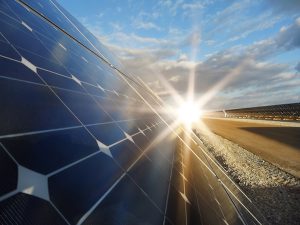Solar power has been utilized for many years, however, if it is going to play a major role in the future of energy, it’s going to have to get bigger and far more efficient. Concentrating solar power can be the answer to solving both issues, as concentration paves the way for larger, higher-efficiency solar power plants.
In fact, the two largest solar power plants ever constructed have been brought online in the last few years, but they utilize different techniques for concentrating the energy from the sun – mirrors and Fresnel lenses. The question though is, which technology will win the race and prove to be the most efficient for use in solar power?
The basic idea of a Fresnel lens is simple. The construction can be associated with the rings of a tree. Imagine taking a plastic magnifying glass lens and slicing it into a hundred concentric rings – these rings get smaller and smaller, just like the rings of a tree. Each ring focuses light toward the center.
By concentrating solar power onto solar cells, a Fresnel lens can increase the amount of sun striking the solar cell, thereby allowing a relatively small amount of silicon photovoltaic (PV) material to be used in large solar panels. Since the silicon PV material is the primary determiner of the cost and efficiency of the solar panel, these cells allow a high-efficiency panel to be made at a fraction of the cost.
The largest Fresnel concentrating solar power plant opened in 2012. The 30MW plant near Alamosa, Colorado uses 504 tracking panels each with a 60kW capacity. The Fresnel lenses concentrate solar energy about 500 times onto multi-junction solar cells. Multi-junction solar cells are able to convert more sunlight into electricity because they are made of multiple materials, each of which harvests energy from a different portion of the spectrum.
The efficiency of the cells used in the Alamosa plant is 25%, and the manufacturer is currently producing cells with approximately 36% efficiency, showing that this technology has a great deal of potential in future solar power plants.
Mirrors were the first technology used to concentrate solar power onto collectors. The pioneering power plant design overcame a major weakness of early solar power collectors: the inability to achieve large-scale capacity.
In the 1980’s, PV systems were in their beginning stages, and were far from efficient. However, solar water heaters had already made it to the market and were selling quite well. That lead to using solar energy to produce electricity the same way coal, gas, and nuclear power plants did – producing heat to make steam to turn a turbine. In 1982, Solar One, located outside of Barstow, California, came online with a production capacity of 10MW – ten times the capacity of the largest PV system in use at that time.
At Universe Optics, we will work with your design team to create the precision lens you require for equipment designed to be used in solar energy. Our engineers, along with our manufacturing facilities work to ensure that the accuracy is what you demand.
Both mirrors and Fresnel lenses have their place in solar energy. However, the future of solar energy, as the future of energy products as a whole, is probably best with the balance of both. Fresnel lens-based photovoltaic generators will be the best for meeting peak energy demand during the day, while the storage capacity of thermal solar plants with the use of mirrors can help to address concerns about dramatic fluctuations in production at night or due to low sun days.